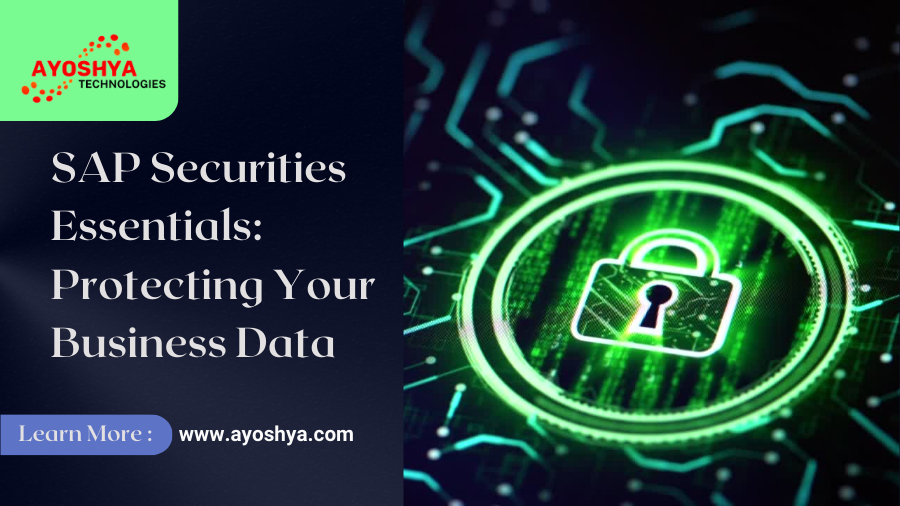I. Introduction to SAP Securities
SAP Security (Systems, Applications, and Products) is a security technology that protects a company’s data and systems from unauthorized access. SAP Security includes tools, processes, and measures to monitor access rights and user activities.
CloudFoundation
SAP Security is a combination of three areas:
- Platform security
- Customization protection
- Segregation of duties
SAP Security includes:
- Black box vulnerability analysis
- Misconfigurations
- Checking against weak passwords
- Insecure connections
- Access control
- Cryptography
- User management
- Data locking
- Multiple authorization roles
SAP Security ensures that:
- Only legitimate users can access the system
- Users can only perform their designated tasks
- Data integrity is granted at all times
- Data is protected against unauthorized access
SAP Security is important for any enterprise running SAP applications. SAP Systems are a type of ERP software used by many businesses across a variety of industries.
what is securities transaction tax (stt)
II. Understanding SAP Securities
SAP Securities involves a multi-faceted approach, encompassing various components. Understanding these components and identifying vulnerabilities is crucial to maintaining a secure SAP environment. A security breach in SAP systems can have severe consequences, ranging from data leaks to operational disruptions.
SAP Security Interview Questions: A Path to Success
III. Best Practices for SAP Securities
Implementing role-based access control, conducting regular security audits, and employing data encryption are essential best practices for SAP Securities. These measures help restrict unauthorized access, identify vulnerabilities, and safeguard sensitive data.
SAP security is a key part of an organization’s cybersecurity strategy. Some best practices for SAP security include:
- User activity monitoring: Monitor user activity and implement user access controls
- Data encryption: Ensure data is securely stored and encrypted
- Enhancement packs: Keep up to date on the latest enhancement packs
- Standard installation: Revert to standard installation
- Patch management: Apply patch management
- Application layer SIEM: Apply application layer SIEM
IV. Importance of Regular Updates
Regularly updating SAP systems is a fundamental aspect of security. Patch management is crucial for addressing vulnerabilities and ensuring that the system remains resilient against emerging threats. Staying updated not only enhances security but also improves overall system performance.
V. User Education and Training
Investing in user education and training is as vital as technological safeguards. Users play a pivotal role in maintaining SAP security, and awareness programs contribute to a culture of security within the organization.
VI. Integrating SAP Security with Overall IT Security
Aligning SAP security with broader IT security policies is essential for creating a cohesive and comprehensive security strategy. Consistency across different systems ensures a unified defense against potential threats.
VII. Advanced Threat Protection in SAP
Utilizing advanced security tools is imperative for detecting and mitigating sophisticated threats. Proactive monitoring and timely response mechanisms are essential to staying one step ahead of potential security breaches.
VIII. SAP Security in Cloud Environments
With the increasing adoption of cloud-based solutions, securing SAP in the cloud presents unique challenges. This section explores effective strategies and best practices for ensuring the security of SAP systems in cloud environments.
IX. Case Studies: Lessons Learned
Real-world examples of SAP security breaches provide valuable insights into the consequences and recovery strategies. Analyzing these cases helps organizations learn from past mistakes and enhance their security posture.
X. Regulatory Compliance in SAP Security
Navigating regulatory requirements is a crucial aspect of SAP security. Non-compliance can result in severe consequences for businesses. Understanding and adhering to industry-specific regulations is paramount for safeguarding data.
XI. Future Trends in SAP Security
Exploring emerging technologies in SAP security and anticipating future challenges helps organizations prepare for evolving threats. This section delves into the latest advancements and trends shaping the landscape of SAP security.
XII. The Human Factor in SAP Security
Addressing internal threats and fostering employee accountability are often overlooked aspects of SAP security. This section emphasizes the role of individuals in maintaining a secure environment and encourages a sense of responsibility among employees.
XIII. Conclusion
In conclusion, SAP security is an ongoing and multifaceted endeavor. From understanding the key components to implementing best practices and staying ahead of emerging threats, businesses must prioritize the protection of their SAP systems. Continuous education, integration with broader IT security, and proactive measures are essential for safeguarding business data.
FAQs
- How often should SAP systems be audited for security vulnerabilities? Regular security audits should be conducted at least quarterly to identify and address vulnerabilities promptly.
- What role does employee training play in SAP security? Employee training is crucial to create awareness and foster a culture of security, reducing the risk of human-related security breaches.
- Can SAP security measures be applied to cloud-based environments? Yes, SAP security measures can and should be adapted for cloud-based environments, with additional considerations for the unique challenges posed by the cloud.
- Why is regulatory compliance important in SAP security? Regulatory compliance ensures that businesses adhere to industry-specific security standards, reducing the risk of legal consequences and data breaches.
- What are the key future trends in SAP security? Future trends in SAP security include the integration of artificial intelligence, machine learning, and advanced analytics for more robust threat detection and prevention.
